
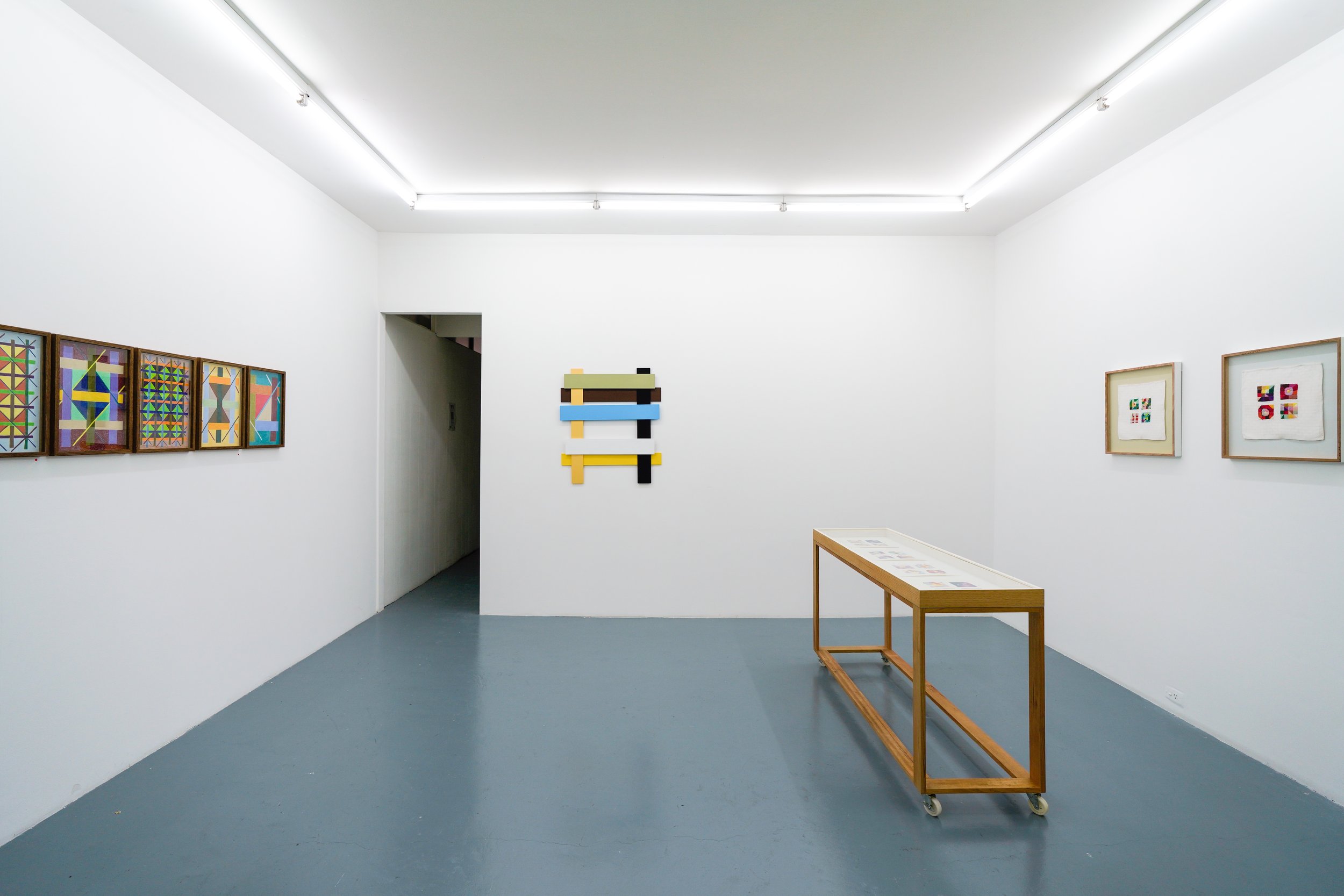
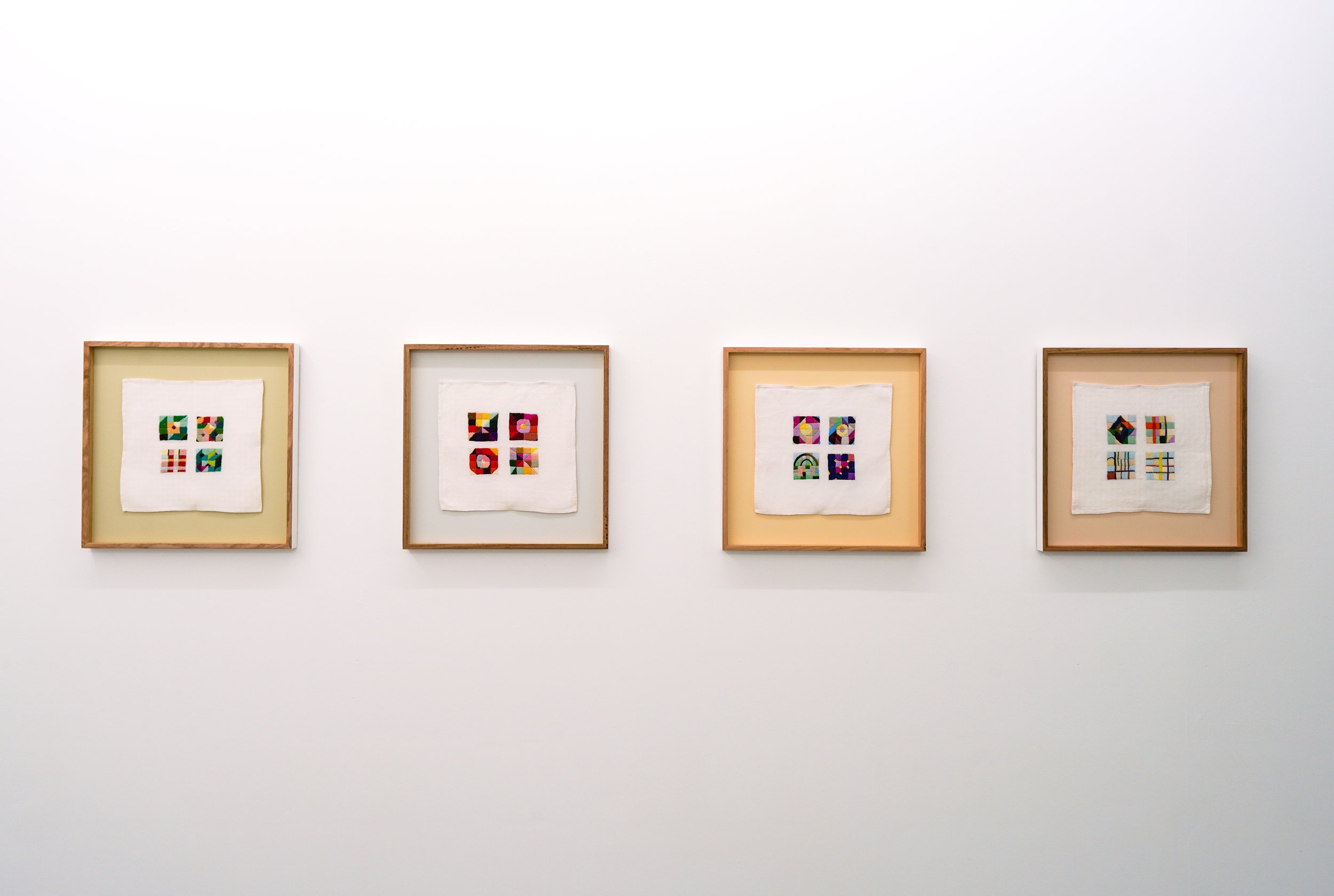
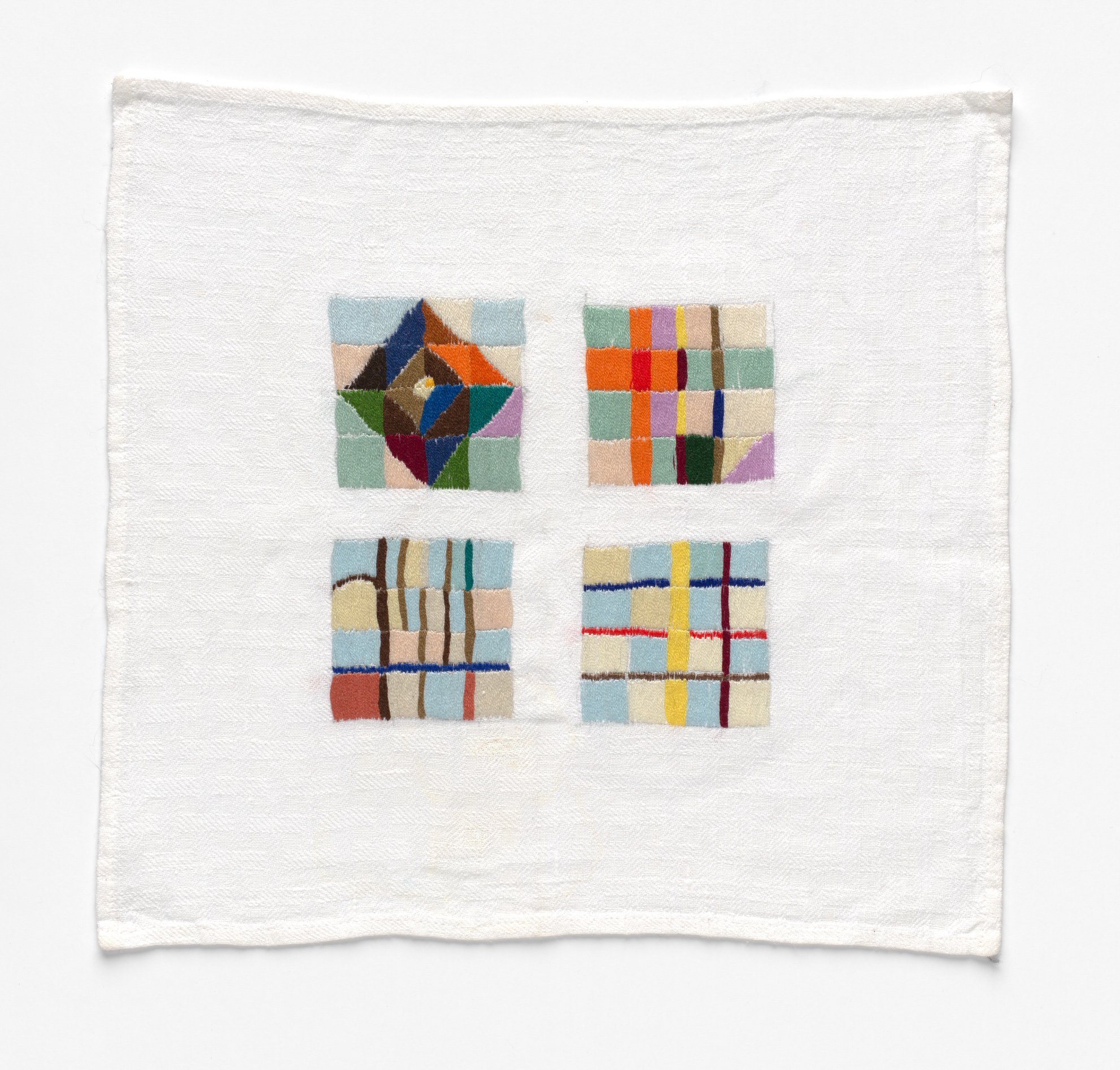
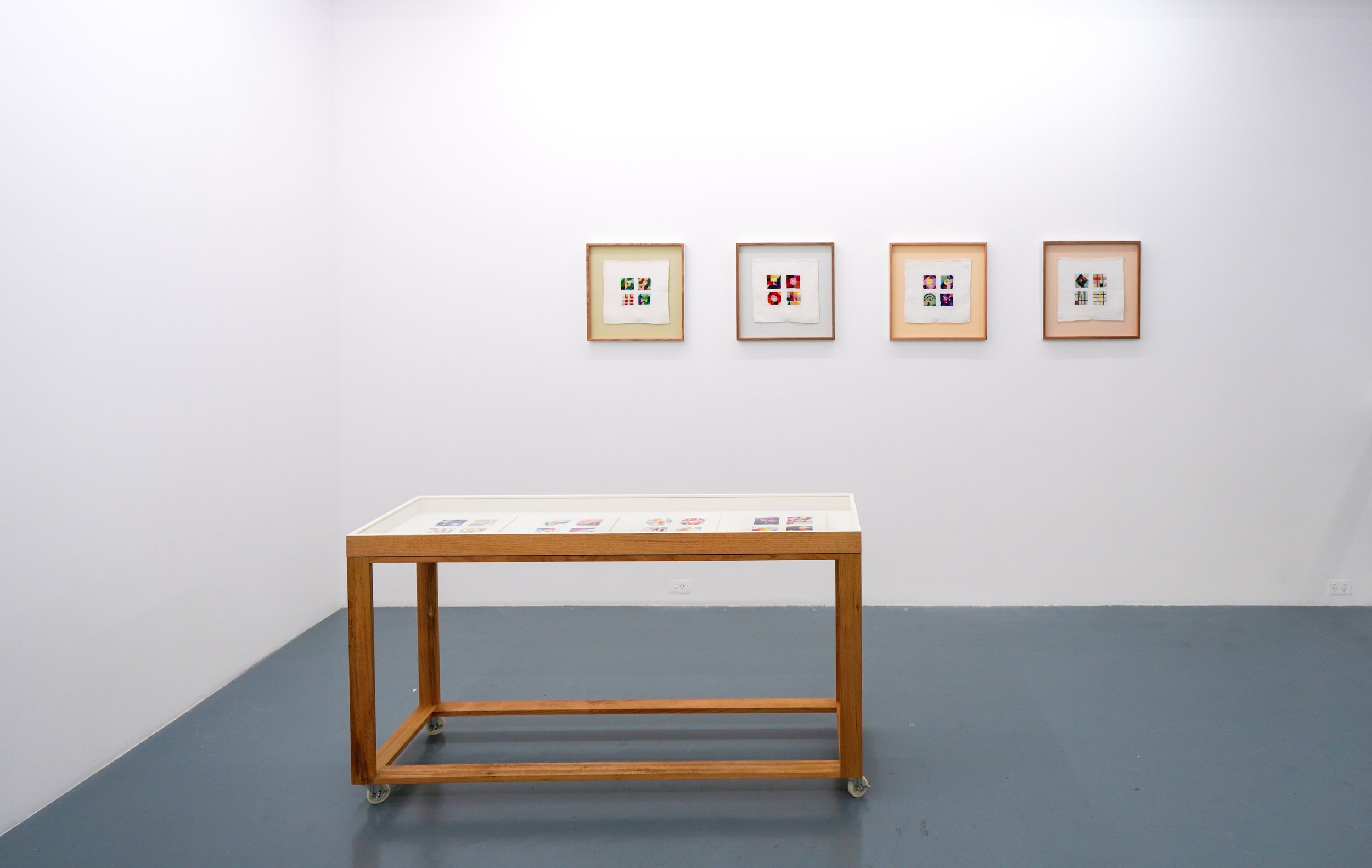
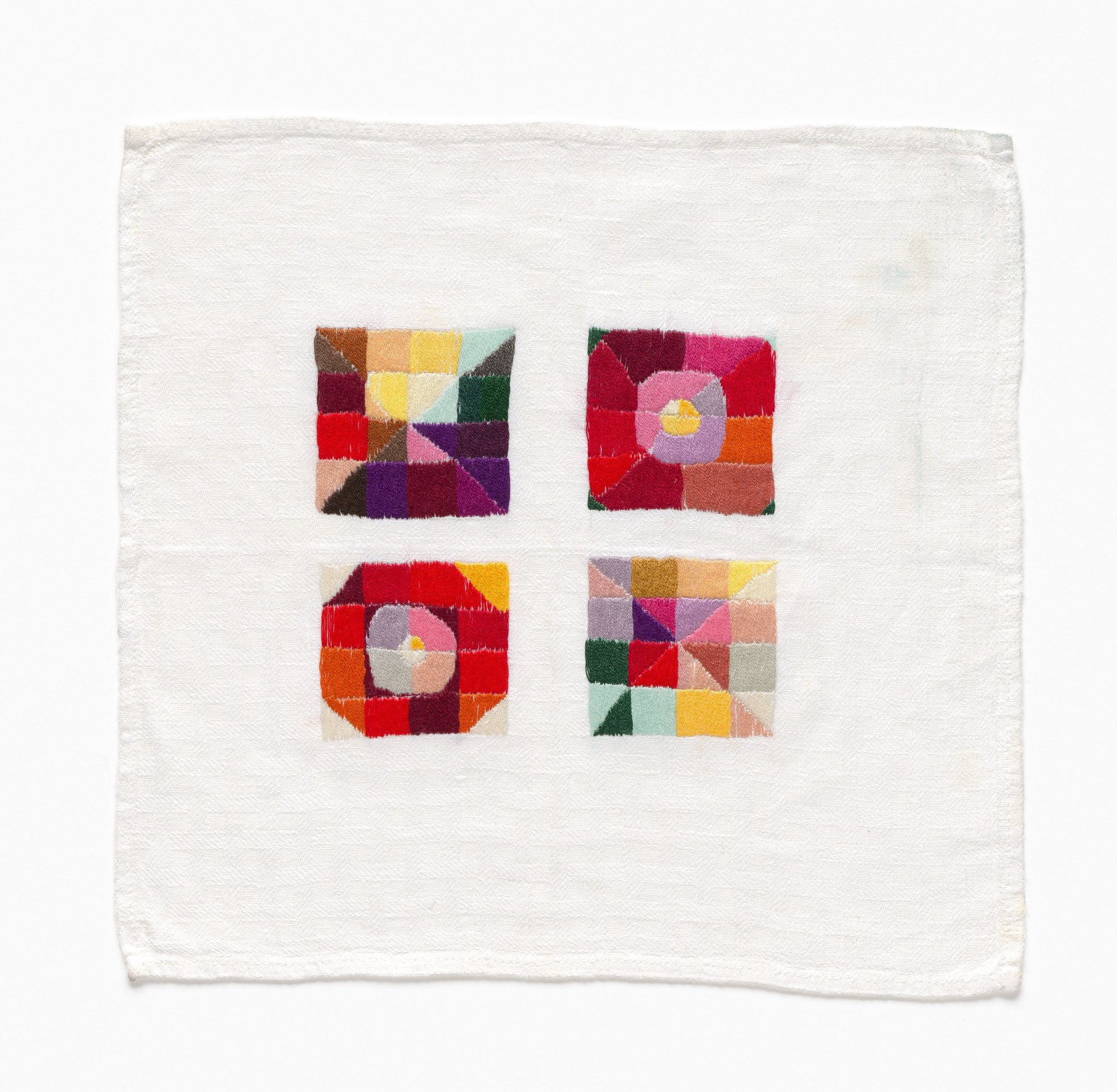
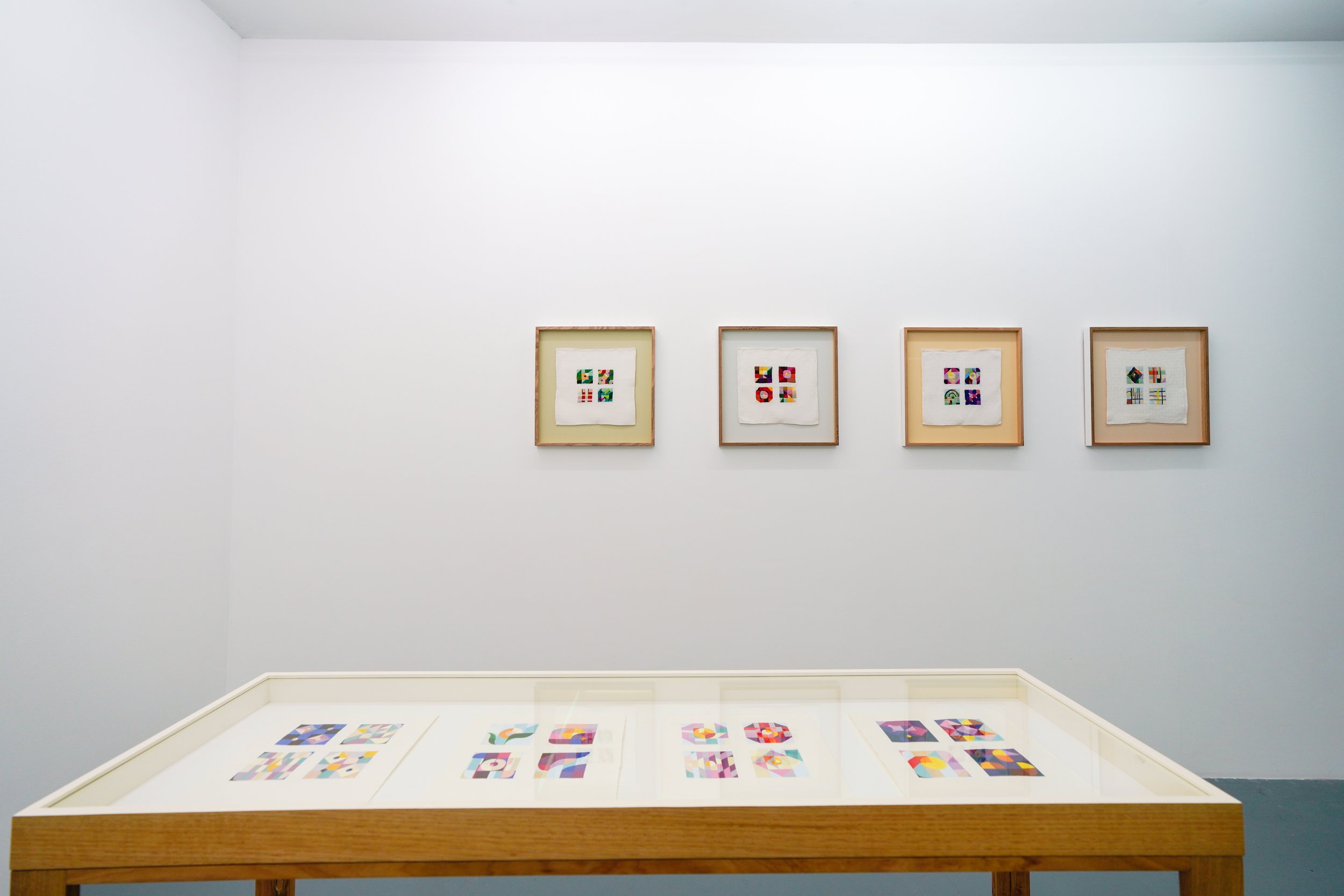

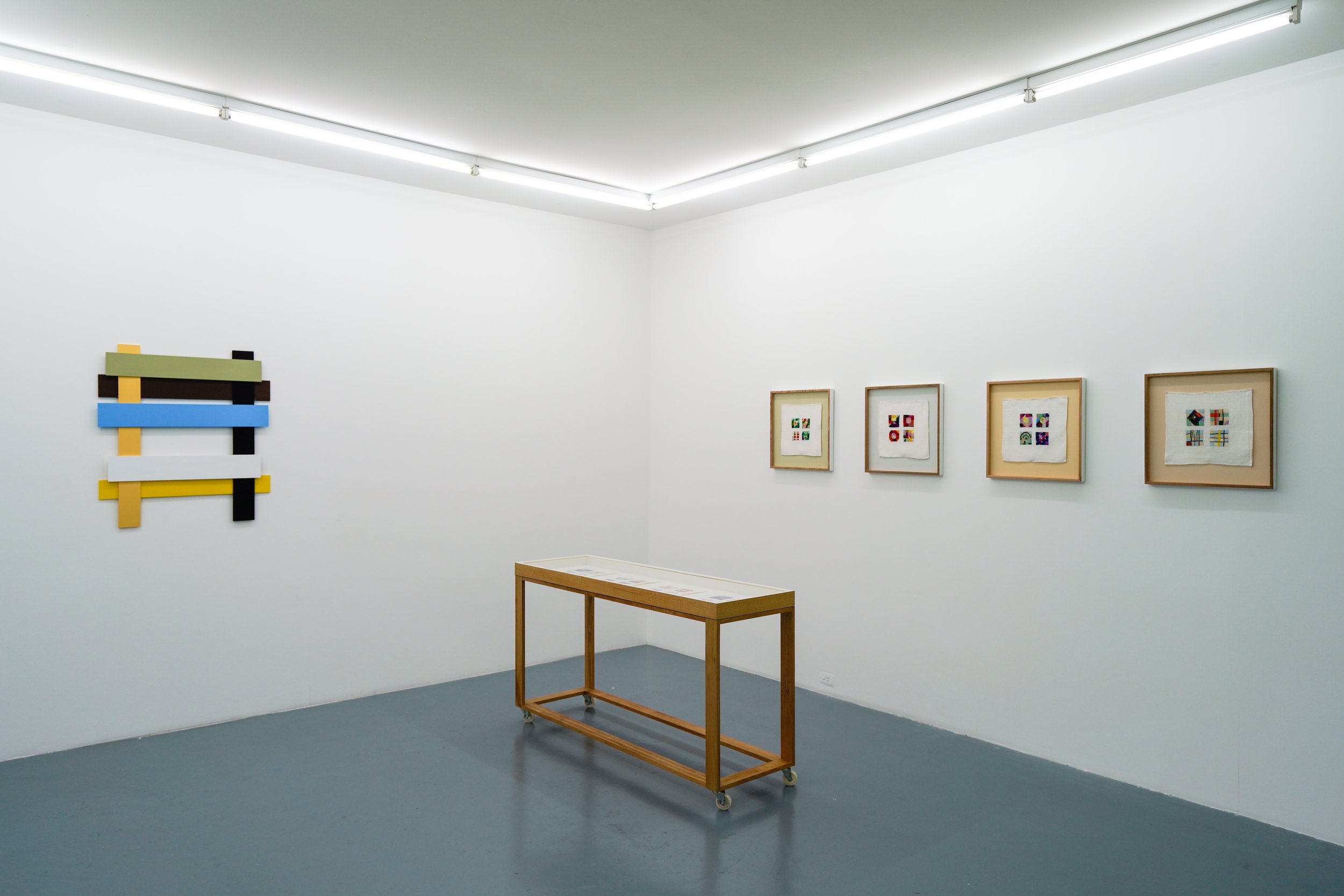

Crossovers: Anna Farago and Hannah Maskell, 2022, Fivewalls, Hopkins St, Footscray. Installation photos: Sarah Treleaven
CROSSOVERS
Anna Farago and Hannah Maskell
19 January – 5 February 2022
Fivewalls, Hopkins St, Footscray
Crossovers is an exhibition of textiles, works on paper and assemblages placed in conversation through a material exploration of grids and colour. Both Farago and Maskell share a soft edged approach to hard edged abstraction.
Ideas for a collaboration were first discussed whilst corresponding during the 2020 lockdown about the urge to experiment using any accessible medium, time and circumstance allowed. The need for colour exploration became heightened as they worked at kitchen tables and in home studios, drawing, painting, stitching and assembling, whilst juggling parenting, home schooling and other demands. These crossovers, and other serendipitous connections, are celebrated and extended using sequencing and groupings that continue the dialogue within the gallery space.
——————
Few formal techniques and approaches announce the arrival of modernism in art at the turn of the twentieth century as emphatically as the grid. As Rosalind Krauss writes the grid functions to declare the modernity of modern art in two ways, the spatial and the temporal. As a spatial arrangement the grid flattens, orders and geometrcizes. In a temporal sense the sudden proliferation of grid as a foundational tool of abstract painting in the early twentieth century renders it transformative. There was before – the nineteenth century, from which the appearance of grids in the visual arts were almost entirely absent – and then after. [1]
The underlying principles of early modernism and its associated art movements (Cubism, de Stil, Dadaism, Constructivism etc) celebrated change and movement: a rejection of history, an emphasis on experimentation with form in terms of shape and colour, and a belief in technological and social progress dominated cultural discourse for well into the twentieth century. By the 1960s abstract painting had its own distinct history, theory of practice, its critics, and its champions, and had achieved unequivocal institutional acceptance. Male artists were the face of the movement, though women artists such as Helen Frankenthaler, Agnes Martin, Hilma af Klimt, Sonia Delauney and Anni Albers, among others, worked alongside their male counterparts often with little public attention.
When I look at the present-day drawings, paintings and textile works Anna Farago and Hannah Maskell I reflexively look back to modernism and its practitioners, the celebrated and only recently recognised, observing its influence on contemporary art practice. Though the modernists wouldn’t like it, I experience it as a reassuring continuity.
I’m thinking about this before and after moment, the one we are living through, defined by the global coronavirus pandemic and how in the past two years it has reshaped geo-politics, working lives, home, and social structures.
Anna Farago and Hannah Maskell lived through the pandemic in the world’s most locked down city in which they, along with millions of others, were forced to isolate. They continued to make art throughout this period. The resulting work made by these two artists across 2020-21 unfolds like a conversation on the subject of pressure.
In Farago’s studies it’s as though the tumultuous world outside the studio door has been ordered and contained through a series of studies. In them the artist has paid attention to the intersection of lines, in compositions grounded in geometry (owing something to the foundational block form of quilting) and the exploration of a rich, harmonious jewel-like colour palette. These studies have further been elaborated and rearticulated into textiles through cotton and needlepoint techniques. Largely modest in scale, they make no claim for themselves other than a demonstration of commitment to process, repetition and the power of showing up for no one other than yourself.
Hannah Maskell’s drawings vibrate with intensity. Partly this is the effect of a vibrant hi-key palette but it’s also the result of skilful technique in which the artist distributes the pencil pigment across the page with a sure, consistent pressure. Similar to Farago Maskell’s work – both drawings and assemblages – use the grid as an architectural frame. The grid provides anchor points along which the line travels, points varying in spacing to control the degree of complexity and detail. The reference to textiles is unmistakeable however, in Maskell’s drawings and painted assemblages the rectilinear shapes, rectangles and squares, recall the linearity of thread, the weave of fabric, and the structure of a loom.
Anna Farago and Hannah Maskell have found a common thread as they make their way through these difficult days, a way through. It’s no small feat. So much is required to get anything done. These studies and small works are a testament to grit, to the judicious deployment of available material and psychological resources: time, space, commitment, and a capacity, not only to hope, but to endure.
– Anna Zagala, January 2022.
[1] Rosalind Krauss, October, vol. 9 (Summer, 19779), pp 50 http:.//www.jostar.org/stable/778321. Accessed 11/1/2022.
Catalogue essay to accompany the exhibition Crossovers: Anna Farrago and Hannah Maskell, 19 January – 5 February 2022, Five Walls, Footscray.